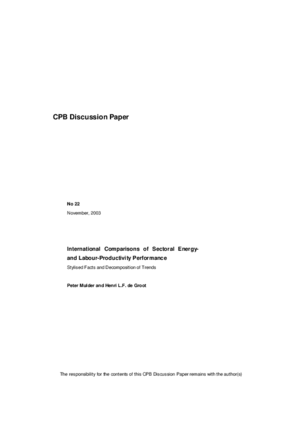International comparison of sectoral energy- and labour-productivity performance; stylised facts and decomposition of trends
Internationale verschillen in energie-efficiëntie blijven substantieel
We are sorry, unfortunately there is no English translation of this page.
This paper simultaneously explores trends in energy- and labour productivity for 14 OECD countries and 13 sectors over the period 1970-1997.
A principal aim of this paper is to trace back macroeconomic productivity developments to developments at the level of individual sectors, in order to correct trends in technology-driven productivity improvements for the impact of structural effects.
First, we document trends in macroeconomic energy- and labour productivity performance, examining the role of the Manufacturing, Services, Transport and Agricultural sector.
Second, we take a closer look at the role of 10 Manufacturing sectors in driving aggregate Manufacturing energy- and labour-productivity performance. A cross-country decomposition analysis reveals that in some countries structural changes contributed considerably to aggregate energy-productivity growth while in other countries they partly offset energy-efficiency improvements. In contrast, structural changes only play a minor role in explaining aggregate labour-productivity developments. We identify for each country the percentage contribution of each sector to aggregate structural and efficiency changes.
Furthermore, we find labour productivity growth to be higher on average than energy productivity growth. Over time, this bias towards labour productivity growth is increasing in the Transport, Agriculture and aggregate Manufacturing sectors, while it is decreasing in Services and most Manufacturing sectors.
